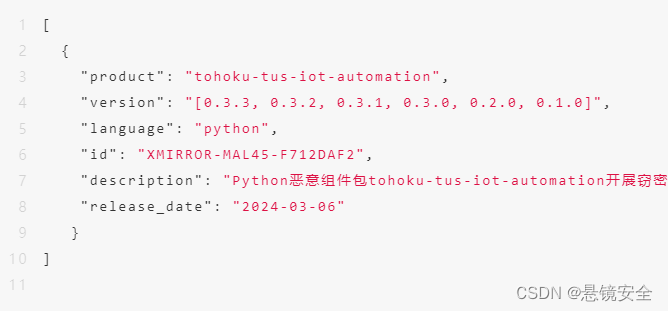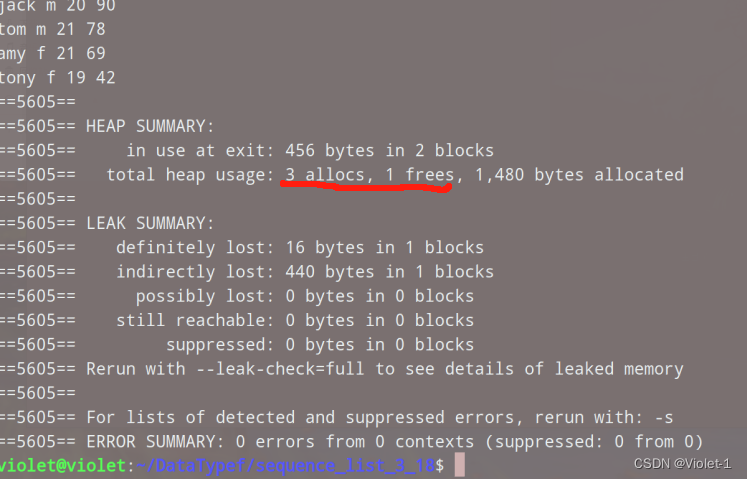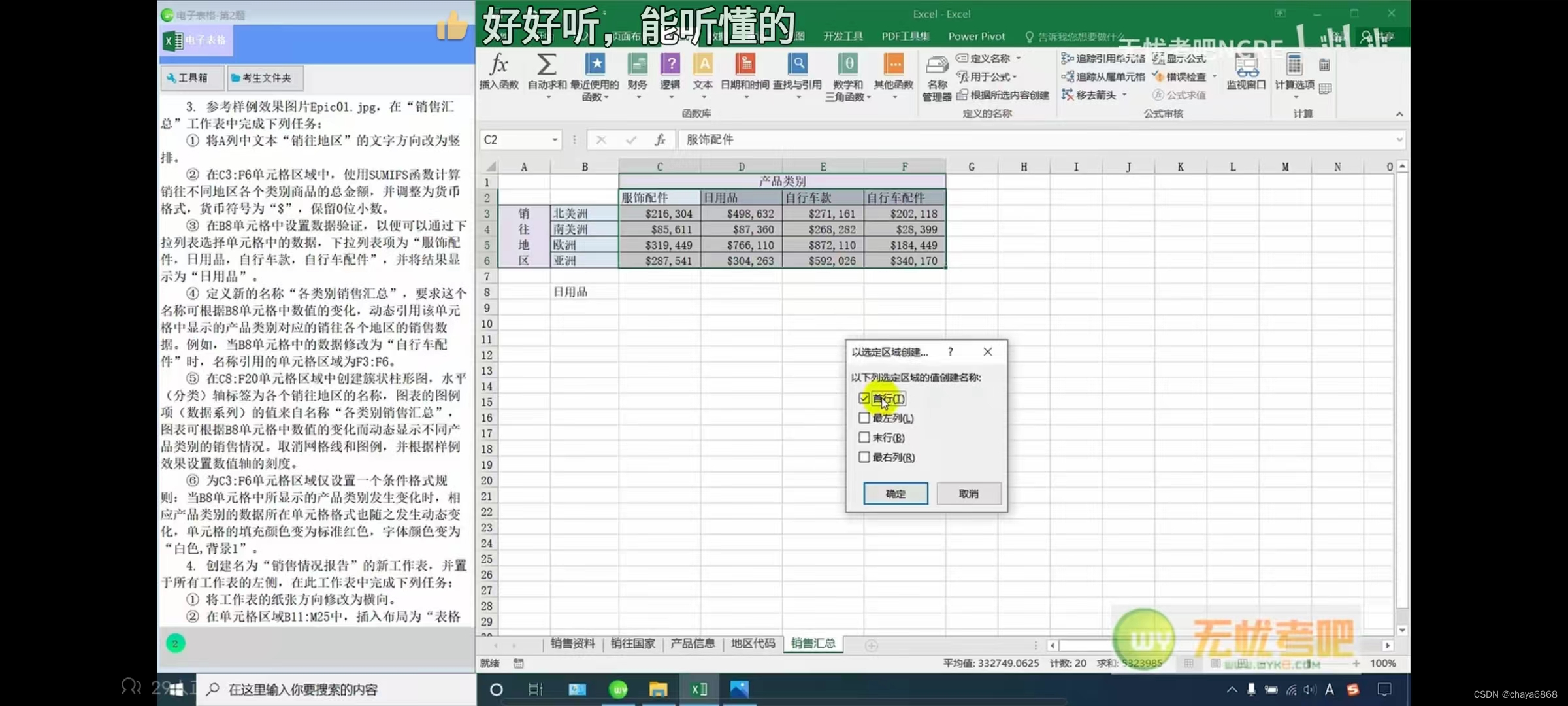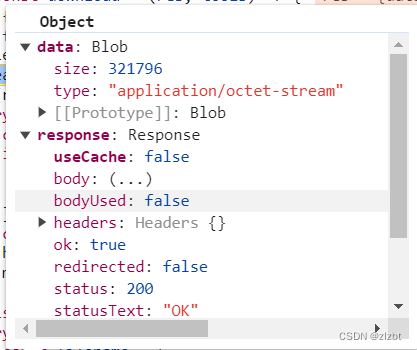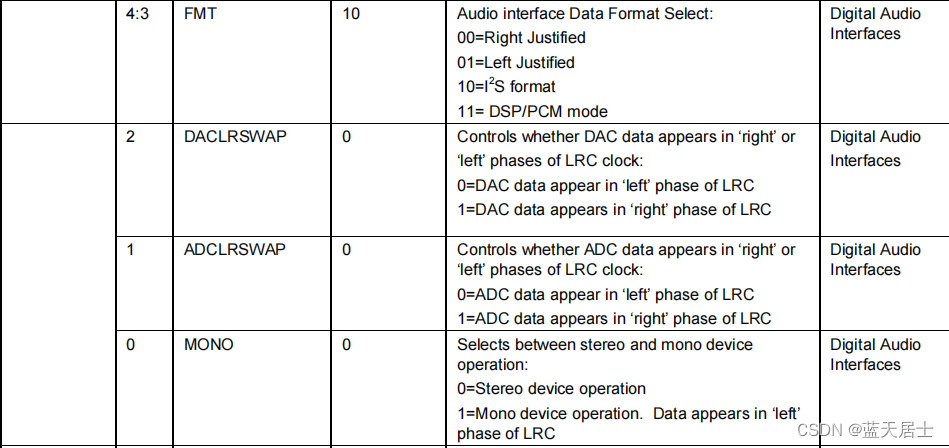一、函数介绍
头文件
#include <ESP8266WiFi.h>
#include <ESP8266WiFiMulti.h>
ESP8266WiFi.h库主要用于连接单个WiFi网络。如果需要连接到多个WiFi网络,例如在需要切换不同网络或者备用网络时,可以使用ESP8266WiFiMulti.h头文件,它是ESP8266WiFi.h的扩展
ESP8266WiFi.h头文件的内容如下:
/*
ESP8266WiFi.h - esp8266 Wifi support.
Based on WiFi.h from Arduino WiFi shield library.
Copyright (c) 2011-2014 Arduino. All right reserved.
Modified by Ivan Grokhotkov, December 2014
This library is free software; you can redistribute it and/or
modify it under the terms of the GNU Lesser General Public
License as published by the Free Software Foundation; either
version 2.1 of the License, or (at your option) any later version.
This library is distributed in the hope that it will be useful,
but WITHOUT ANY WARRANTY; without even the implied warranty of
MERCHANTABILITY or FITNESS FOR A PARTICULAR PURPOSE. See the GNU
Lesser General Public License for more details.
You should have received a copy of the GNU Lesser General Public
License along with this library; if not, write to the Free Software
Foundation, Inc., 51 Franklin St, Fifth Floor, Boston, MA 02110-1301 USA
*/
#ifndef WiFi_h
#define WiFi_h
#include <stdint.h>
extern "C" {
#include <wl_definitions.h>
}
#include "IPAddress.h"
#include "ESP8266WiFiType.h"
#include "ESP8266WiFiSTA.h"
#include "ESP8266WiFiAP.h"
#include "ESP8266WiFiScan.h"
#include "ESP8266WiFiGeneric.h"
#include "WiFiClient.h"
#include "WiFiServer.h"
#include "WiFiServerSecure.h"
#include "WiFiClientSecure.h"
#include "BearSSLHelpers.h"
#include "CertStoreBearSSL.h"
#ifdef DEBUG_ESP_WIFI
#ifdef DEBUG_ESP_PORT
#define DEBUG_WIFI(fmt, ...) DEBUG_ESP_PORT.printf_P( (PGM_P)PSTR(fmt), ##__VA_ARGS__ )
#endif
#endif
#ifndef DEBUG_WIFI
#define DEBUG_WIFI(...) do { (void)0; } while (0)
#endif
extern "C" void enableWiFiAtBootTime (void) __attribute__((noinline));
class ESP8266WiFiClass : public ESP8266WiFiGenericClass, public ESP8266WiFiSTAClass, public ESP8266WiFiScanClass, public ESP8266WiFiAPClass {
public:
// workaround same function name with different signature
using ESP8266WiFiGenericClass::channel;
using ESP8266WiFiSTAClass::SSID;
using ESP8266WiFiSTAClass::RSSI;
using ESP8266WiFiSTAClass::BSSID;
using ESP8266WiFiSTAClass::BSSIDstr;
using ESP8266WiFiScanClass::SSID;
using ESP8266WiFiScanClass::encryptionType;
using ESP8266WiFiScanClass::RSSI;
using ESP8266WiFiScanClass::BSSID;
using ESP8266WiFiScanClass::BSSIDstr;
using ESP8266WiFiScanClass::channel;
using ESP8266WiFiScanClass::isHidden;
// ----------------------------------------------------------------------------------------------
// ------------------------------------------- Debug --------------------------------------------
// ----------------------------------------------------------------------------------------------
public:
void printDiag(Print& dest);
friend class WiFiClient;
friend class WiFiServer;
};
extern ESP8266WiFiClass WiFi;
#endif
ESP8266 Wi-Fi库是基于ESP8266 SDK开发的。
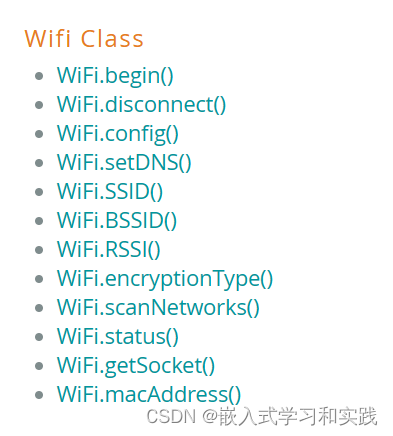
WiFi.mode函数
WiFi.mode()//设置模式
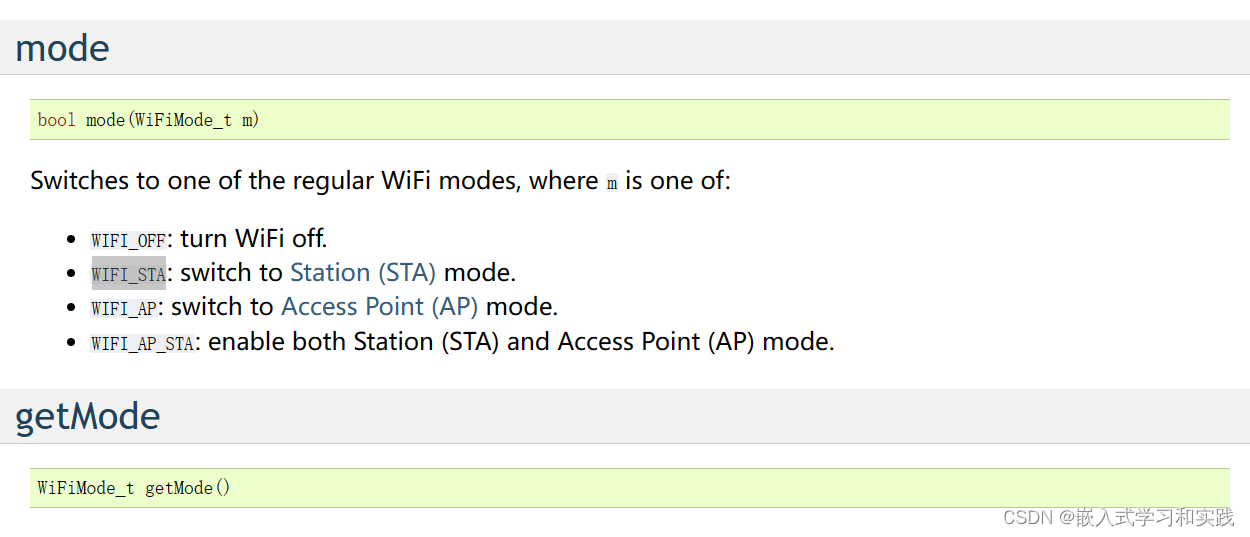
WiFi.begin函数
WiFi.begin("network-name", "pass-to-network");
WiFi.status函数
WiFi.status()//获取连接是否已经完成,连接过程可能需要几秒钟
WiFi.localIP函数
WiFi.localIP()//获取DHCP分配给ESP模块的IP地址
根据以上一个函数,可以编写一个测试代码,来进行esp8266的联网功能测试。
二、测试例程
测试代码如下:
#include <ESP8266WiFi.h>
void setup()
{
Serial.begin(115200);
Serial.println();
WiFi.begin("network-name", "pass-to-network");
Serial.print("Connecting");
while (WiFi.status() != WL_CONNECTED)
{
delay(500);
Serial.print(".");
}
Serial.println();
Serial.print("Connected, IP address: ");
Serial.println(WiFi.localIP());
}
void loop() {}
如果串口输出只有越来越多的点… ,原因可能是输入的Wi-Fi网络的名称或密码就不正确。可通过PC或手机从头连接到该Wi-Fi网络,验证名称和密码。
注意:如果建立了连接,然后由于某种原因失去了连接,ESP将自动重新连接到上次使用的接入点,一旦它再次联机。这将由Wi-Fi库自动完成,无需任何用户干预。

编写复杂点的功能,连接tcp服务器,并进行通信,代码示例如下:
#include <ESP8266WiFi.h>
#include <ESP8266WiFiMulti.h>
#ifndef STASSID
#define STASSID "your-ssid"
#define STAPSK "your-password"
#endif
const char* ssid = STASSID;
const char* password = STAPSK;
const char* host = "djxmmx.net";
const uint16_t port = 3000;
ESP8266WiFiMulti WiFiMulti;
void setup() {
Serial.begin(115200);
// We start by connecting to a WiFi network
WiFi.mode(WIFI_STA);
WiFiMulti.addAP(ssid, password);
Serial.println();
Serial.println();
Serial.print("Wait for WiFi... ");
while (WiFiMulti.run() != WL_CONNECTED) {
Serial.print(".");
delay(500);
}
Serial.println("");
Serial.println("WiFi connected");
Serial.println("IP address: ");
Serial.println(WiFi.localIP());
delay(500);
}
void loop() {
Serial.print("connecting to ");
Serial.print(host);
Serial.print(':');
Serial.println(port);
// Use WiFiClient class to create TCP connections
WiFiClient client;
if (!client.connect(host, port)) {
Serial.println("connection failed");
Serial.println("wait 5 sec...");
delay(5000);
return;
}
// This will send the request to the server
client.println("hello from ESP8266");
while(client.status() == ESTABLISHED)
{
// read back one line from server
Serial.println("receiving from remote server");
String line = client.readStringUntil('\r');
if(!line.isEmpty())
{
Serial.println(line);
client.println(line);
}
delay(3000);
}
// not testing 'client.connected()' since we do not need to send data here
//while (client.available()) {
char ch = static_cast<char>(client.read());
Serial.print(ch);
//String line = client.readStringUntil('\r');
//Serial.println(line);
// }
Serial.println("closing connection");
client.stop();
Serial.println("wait 5 sec...");
delay(5000);
}

参考:
https://arduino-esp8266.readthedocs.io/en/latest/index.html
https://github.com/esp8266/Arduino.git
https://arduino-esp8266.readthedocs.io/en/2.4.2/
https://www.arduino.cc/reference/en/libraries/wifi/
http://www.taichi-maker.com/homepage/iot-development/iot-dev-reference/esp8266-c-plus-plus-reference/
